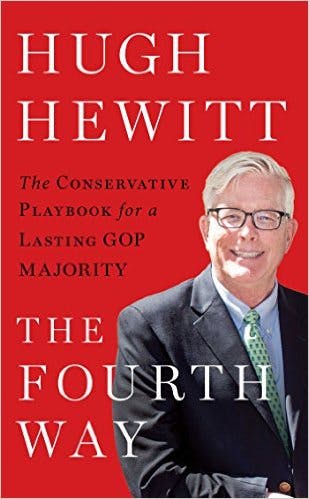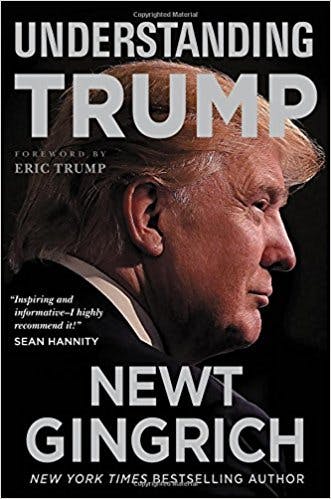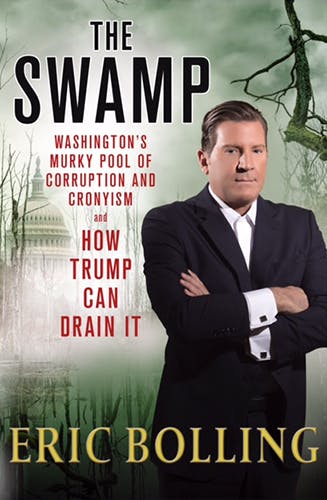The titles of recent books about President Donald Trump suggest to the reader that there must be a person of substance behind the weird hair and the too-long ties—that there is a profound truth amidst the tweets and the hoopla and the bombast. The Washington Post published Trump Revealed, a collection of investigative journalism; Michael D’Antonio dropped The Truth About Trump; and David Cay Johnston wrote The Making of Donald Trump, which argued that to understand Trump you have to understand his past.
Six months into Trump’s first term, however, there is no evidence that there is any depth to the man. The real Trump is the one right in front of us, tweeting about the blood coming from Mika Brzezinski’s face. He has almost no grasp of policy, and takes no interest in it. He has no ideological convictions, even if he has a raw, emotional understanding of the politics of white grievance. He acts like the extremely wealthy and privileged man he is, without fear of consequence.
Yet the book industry continues to bank on a widespread appetite for a unified theory of Trump. And while many books have emerged to explain Trump from the left, liberals by no means have a monopoly on the business of Trump-splaining. We are awash in books by conservatives attempting to elucidate both Trump and Trumpism, including The Fourth Way: The Conservative Playbook For a Lasting GOP Majority by radio host and new kid on the MSNBC block Hugh Hewitt; Understanding Trump by former House Speaker and America ruiner Newt Gingrich; and The Swamp: Washington’s Murky Pool of Corruption and Cronyism and How Trump Can Drain It by Fox News libertarian Eric Bolling.
All these books seek to explain Trump—and to coopt his movement. In the process, they reveal the remarkably shallow intellectual foundations of the Republican Party in the Trump era.
Hewitt’s The Fourth Way is, like its author, comically pretentious. It features not one, not two, but three epigraphs: from the Declaration of Independence, the preamble to the Constitution, and Abraham Lincoln’s second inaugural address. It also features four appendixes, one of which is The Homestead Act of 1862. The book’s 176 pages are padded out with the meaningless dreck that defines talk radio—the Founding Fathers “knew liberty,” he repeats again and again in a section about the judiciary; Trump “needs some wins, and early. Big Wins. Lasting wins. Wins you can point to for decades to come.”
His Fourth Way policies are not new. He pushes block grants, building up the military, transferring the powers of the federal government to local constituencies, putting “umpires” on the courts, and lowering corporate tax rates. It is littered with disingenuous claims: that President Barack Obama “packed” the D.C. Circuit Court of Appeals, that the 2009 stimulus package didn’t build anything concrete, and, most gallingly, that Donald Trump is not Donald Trump.

Trump himself is hardly reckoned with in The Fourth Way, which is the only way that Hewitt can push most of his ideas with a straight face. Instead, he refers to Trump, Mike Pence, Paul Ryan, and Mitch McConnell as a unit. Literally: He refers to them as an acronym, TPRM, as if Trump emerged fully formed from a Federalist Society laboratory and had not spent the entire 2016 campaign kicking Republican orthodoxy in the teeth.
After spending eight years trashing Obama’s immigration policy, Hewitt proposes that Trump accept it. After writing that Trump should build the wall, Hewitt writes: “All law-abiding immigrants shall be regularized and permitted to stay in the United States with a new ‘purple card.’” Why Trump would agree to such an amnesty program is never really explained, because The Fourth Way is entirely an exercise in wish-fulfillment. Hewitt hopes that Trump will blossom into an Orange County Republican, instead of behaving the way that he has for the entirety of his life. That the book’s final chapter is devoted to the question of impeachment suggests that even Hewitt knows that his project is doomed.
Unlike The Fourth Way, Gingrich’s Understanding Trump is almost entirely padding. Significant chunks of Trump’s 1987 opus The Art of the Deal are quoted in full. At one point he quotes BuzzFeed plagiarist turned Independent Journal Review bully Benny Johnson for more than three full pages. Much of the remainder of the book is made up of passages from Trump’s speeches and excerpts from articles Gingrich may or may not have read online.
Unlike The Fourth Way, however, there’s an attempt to reckon with Trump’s contradictions and flaws. He argues that Trump’s outer-borough background is the key to both his toughness and his ability to connect with voters. Gingrich sidesteps Trump’s life of extreme privilege by comparing his upbringing to Bill Clinton’s, as if being raised by an alcoholic stepfather in Arkansas is no different than being the son of a real estate magnate in Queens.

He also argues that the idea that Trump is a racist and moronic boor is entirely a media invention. He uses Trump’s “American Carnage” inaugural address, in which Trump calls on America to come together, to show that Trump is, at heart, a uniter. “This inclusive, inspirational message was the theme that allowed President Trump to succeed,” Gingrich writes, as if the racial overtones of “Make America Great Again” were not obvious.
It’s a shrewd and entirely unsubtle shell game: Gingrich preserves the “good” parts of Trump’s tough guy image, while removing the racist ones.
Trump, in Gingrich’s telling, is a kind of political idiot savant—which is why he needs Newt Gingrich. Ultimately, the vision of Trump that Gingrich settles on is a vision of Gingrich himself. He repeatedly compares Trump’s election to the Gingrich-led Republican Revolution in 1994. He argues that Trump’s entire life has been a “rejection of left-wing values,” which better explains Gingrich than the opportunistic Trump. He bashes college campuses, more a fixation of former professor Gingrich than Trump. At the end of the book, Gingrich lists a dizzying array of policies that will be familiar to anyone who followed his failed 2012 presidential bid, including that Congress should somehow pass a law limiting professors’ contracts to seven years and that, yes, Trump should think about building a moon colony.
Did you know that Washington, D.C., was built on a swamp? This is one of the first things you will learn from Eric Bolling’s chest-thumping The Swamp, a word that Bolling uses at least once a page in this 200-page book. In his version of U.S. history, our government has always been corrupt. The Swamp is, in some respects, a dumber, libertarian version of Howard Zinn’s A People’s History of the United States. We may have been told that our leaders are marble men, but in Bolling’s version, they’re all stealers, cheaters, sex addicts, and murderers.

According to Bolling, there is no episode in American history that wasn’t utterly corrupted in some way. LBJ’s Great Society was rendered moot by Vietnam, Clinton’s record of peace and prosperity obliterated by Monica Lewinsky. The Progressive Era may have dramatically decreased corruption, but it did not totally eradicate corruption, which means it was a total failure. Like Trump, Bolling is an instinctive critic of American exceptionalism. But while Bolling luxuriates in the failures of figures like John Edwards and Aaron Burr, Trump’s own numerous scandals are not mentioned.
One could easily read these tales of corruption and conclude that what America needs is a stronger and more transparent government. But Bolling argues the opposite. The government can only fail, he argues, while the free market will handle itself. We don’t need to regulate food safety because people simply won’t eat things that will kill them! Instead, what Trump should do is shrink the government dramatically, cutting HUD and the Department of Energy and making Congress part-time. Bolling mostly comes across like a dumb Hobbes: People do bad things and because they do bad things, we should destroy the state as we know it and let these same people regulate their own affairs.
Still, Bolling points to a version of Trumpism that’s more persuasive than Hewitt’s sidestepping or Gingrich’s shell games. Americans want a government that’s responsive to them, not to elite interests. The problem, however, is that The Swamp unintentionally makes the case for Putinism in America. One can read Bolling’s version of history—with all the government’s compromises and setbacks and messiness—and conclude that what the United States needs isn’t democracy, but a strongman.
Donald Trump’s takeover of the Republican Party wasn’t built on anything resembling a governing vision. These three books are proof that many conservatives see this as an opportunity to push their own vision onto a party in disarray—or perhaps onto a president who is clearly out of his depth. Hewitt, Gingrich, and Bolling are all would-be Henry Higginses, ready to teach their Eliza Doolittle how to be president.
These books also suggest a Republican Party that has reached a nihilistic endpoint. It might control the federal government but, as we’ve seen with the sputtering attempt to repeal and replace Obamacare, it is devoid of a coherent governing program beyond redistributing wealth from the poor to the rich. As Trump himself has shown, when a party has been hollowed out, the hucksters rush in.
